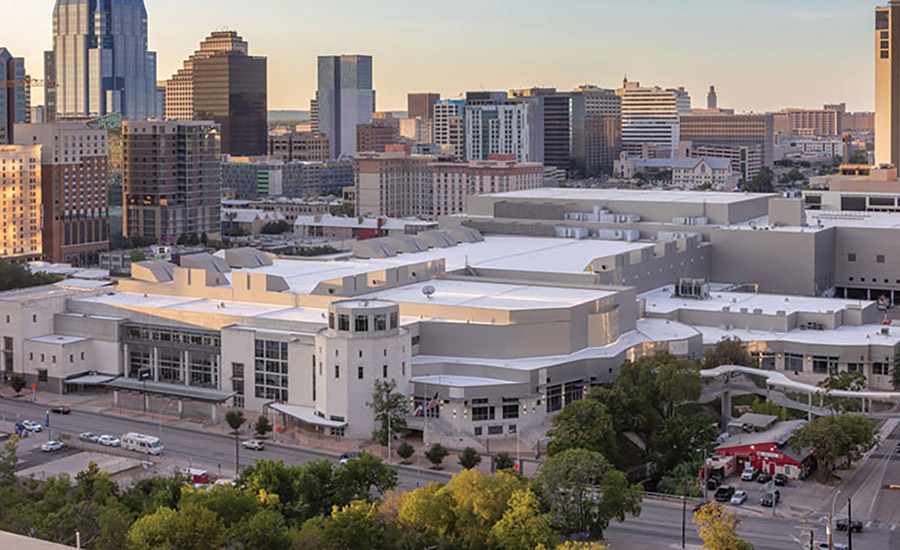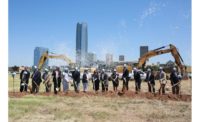If any dictionary needed a contemporary example of a boomtown, Austin would surely fit the bill.
Fueled by a low cost of living as well as a thriving, diverse economy that in recent years has seem major technology companies complement the existing strength of state government and the University of Texas, Austin has seen its population grow by nearly 25% during the past decade. Last year, Austin passed rival technology hub San Jose, Calif., to become the 10th largest U.S. city, with a population of just under 975,000.
Austin’s growth extends to its metropolitan suburbs. The Austin-Round Rock-San Marcos Metropolitan Statistical Area remains the 26th most populous metro area in the country with the seventh-largest numeric increase in population between 2022 and 2023. The Milken Institute says Austin–Round Rock tops its list of the best performing large U.S. cities for 2024. There’s another, equally important index of economic vitality, says interim city manager Jesús Garza. “We know we must invest in quality infrastructure if we are to continue to be able to accommodate that growth and improve our resiliency,” he says, adding the city has a number of generational or transformational projects underway equating to nearly $20 billion worth of future capital expenditures.”
Three major programs evidence how Austin is responding to this rapid growth. Austin-Bergstrom Airport (AUS), with the highest percentage increase of airline tickets for sale between 2019 and 2022, recorded 22 million passengers last year. To meet the demand, Austin announced in 2021 its multiyear Airport Expansion and Development Program, which incorporated post-pandemic considerations into AUS’s 2040 master plan. The program includes more than 60 near- and long-term facility and infrastructure improvements.
The first major element got underway in late 2022 and is expected to complete this year, with a $241.5-million upgrade to the outbound baggage system, led by prime contractor Whiting-Turner. The new system’s 1.5 miles of conveyor will process 4,000 bags per hour and increase system reliability.
September 2023 saw the groundbreaking of a $164-million West Gate Expansion, which will add nearly 85,000 sq ft over three levels of apron, concourse and mezzanine. Hensel Phelps is general contractor for the three-year project, which will feature a third-level outdoor public patio with a view of Austin’s skyline. It is slated to open in 2026.
Two other key components of Journey With AUS got a funding boost in February, with a $39-million grant from the Bipartisan Infrastructure Law. More than half of the funding will be applied toward a 13,000-sq-ft infill expansion of the Barbara Jordan Terminal. Currently in design, the estimated $120-million project includes an elevated slab in the terminal atrium to provide space for security screening, baggage check and passenger processing. Terminal building systems will also be upgraded as part of the project.
“We know we must invest in quality infrastructure if we are to continue to be able to accommodate that growth...”
—Jesus Garza, Interim City Manager, City of Austin
On the airfield side, AUS is nearing completion of a $70-million airplane fuel facility to accommodate expected demand increases over the next 10 years. Austin’s other major municipal mobility effort is the Project Connect transit expansion. Endorsed by Austin voters in November 2020, the original $5.8-billion, 20-mile plan of multiple light rail and bus rapid transit lines twice has been scaled back in the face of rising costs. The latest iteration, approved by the Austin City Council last year following an extensive public engagement process, limits the program to a $7.1-billion initial phase that will include a 9.8-mile, 15-station light rail line. Ultimately, the line will handle an estimated 28,500 passengers daily.
The approval enables Austin Transit Partnership (ATP), an independent corporation formed by the city and the Capital Metropolitan Transportation Authority, to implement the Project Connect program and begin the permitting process and issue the first $150 million in bonds to be paid backed by revenue from the 2020 voter-approved property tax increase. The agency also has applied for Federal Transit Administration New Starts funding with an eye toward getting construction underway by 2027 and launching service six years later.
That schedule is contingent on the outcome of legislative and legal obstacles that have been thrown in Project Connect’s path almost from the outset. Along with several legislative attempts to halt ATP’s bonding authority, state Attorney General Ken Paxton (R) in May 2023 issued a legal opinion questioning the financing strategy. A lawsuit filed the following November claims that the changes to Project Connect are significant enough to require another pubic vote. A trial is scheduled for late May.
Along with attracting more residents and businesses, Austin has also become a high-profile competitor for large meetings, trade shows and other events, including the annual multifaceted SXSW conference and festival.
Eager to enhance its competitive edge while also preserving the vibrancy of its eclectic downtown area, the city is embarking on a $1.6-billion redevelopment and expansion of the existing Austin Convention Center. Funded by Convention Center and hotel occupancy tax revenue, the vertical expansion aims to double the facility’s existing 376,000 sq ft of rentable space within the same footprint while also enhancing neighborhood connections by measures such as reopening street grids.
The JE Dunn/Turner joint venture of J.E. Dunn Construction Group and Turner Construction Co. is serving as construction manager at-risk for the project, which will be designed by the A/E team of Seattle-based LMN Architects and Austin’s Page Southerland Page. According to the Austin Convention Center Dept., plans for the single-phase construction effort call for closure, demolition and construction activities to begin in 2025, with the new, larger facility opening in late 2028.
Garza says the city’s Capital Delivery Services department is efficiently carrying out more than 500 active infrastructure projects worth about $7 billion.




Post a comment to this article
Report Abusive Comment